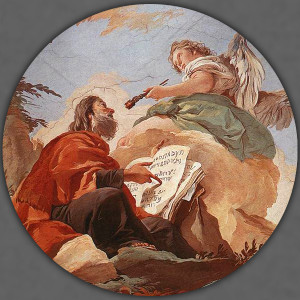Again, this mandala is unusual. In the unexpected category we have the seated Agnus Dei, which suggests a final set of judgments, and four Old Testament Prophets. The prophets are uncommon enough that they don’t have standard individual symbols. Generically, a scroll or a book in the hands of a man would be used to symbolize a prophet. In Pflueger’s mandala, you have to figure out the prophets by knowing their stories. Daniel in the lion’s den, Isaiah’s encounter with the Lord in the temple, and so on.
What was Pflueger’s inspiration and thought process?
I will venture a guess.
Professor Pflueger taught religion, philosophy, and ethics at Pacific Lutheran College (now PLU) from 1930 to 1958. He would have had a deep understanding and interest in Scripture. Also he attended Leipzig University in Germany. I am making the assumption that Dr. Pflueger made his way down to Italy and saw the Sistine Chapel. If he did, this would have made a lasting impression on him.
The Sistine Chapel has the most well-known set of frescos I know of that includes the Last Judgment, the Four Major Prophets: Isaiah, Jeremiah, Ezekiel, and Daniel, as well as the Apostles.
When the PLU chapel was built in 1952 I am guessing that Pflueger suggested the window incorporate themes from the Sistine Chapel. Because the PLU window is only eight feet in diameter Pflueger had to use graphic symbols for the Last Judgment and the Prophets rather than the large format artwork used in the Sistine Chapel. I enjoy his use of both Old and New Testament elements.
That’s my guess. I am open to other theories.
In part 4D we will review the major pieces of symbolism in the mandala which we have not yet covered. In this last group of symbols we will find one more usual element that has been incorporated.

